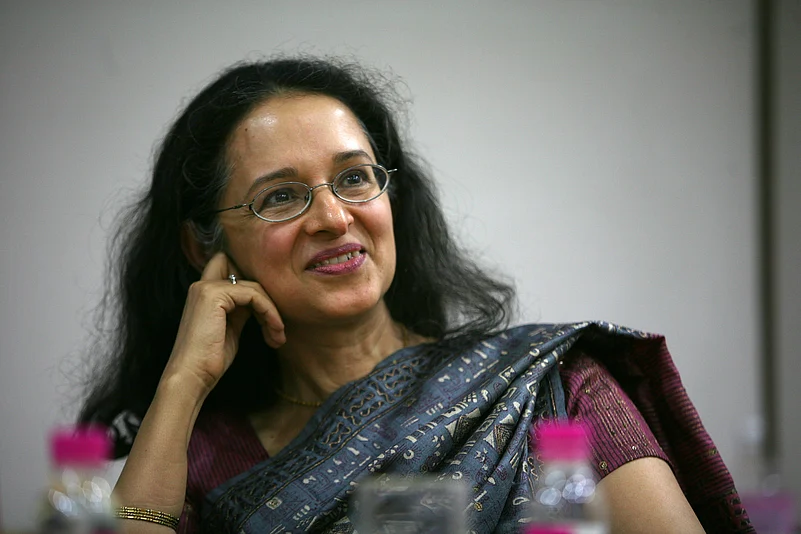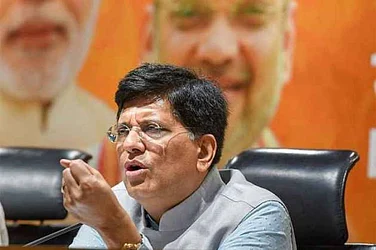The latest Economic Survey proposes removing food prices from India’s inflation calculation. The chief economic adviser’s rationale is that food prices are volatile and targeting inflation without taking food prices into account may help tailor better monetary policy.
The Reserve Bank of India (RBI) said in a bulletin last month that food inflation “is impeding the alignment of headline inflation with its target in India and cannot be tolerated in setting monetary policy any longer.” However, three members of the monetary policy committee (MPC) have highlighted the importance of retaining food prices within RBI’s broader inflation target in its latest meeting.
Advertisement
Food prices in India have remained high the past couple of years with food inflation staying above 6.6 per cent between July 2023 and June 2024.
It is in this context that Outlook Business sat down with Ashima Goyal, member of RBI’s monetary policy committee and a professor at the Indira Gandhi Institute of Development Research, on the sidelines of the Global Fintech Fest (GFF). Goyal spoke about why the central bank should focus on core inflation more even if headline inflation remains the target.
Edited excerpts:
Advertisement
What do you think of the proposal to remove food prices from the inflation target?
I do not think it would be right to entirely remove food prices. Headline inflation [inflation calculation that includes food prices] is a better target because it affects the welfare of people.
At the same time, food prices are subject to weather and all kinds of supply side issues which monetary policy has no effect on. Monetary policy should focus on core inflation, [the measure] which excludes volatile commodity prices from headline inflation.
Research shows core inflation is more stable. It also shows causality is core to headline [inflation]. Core also affects household expectations in the longer term although in the shorter-term food prices have more effect. So, discussion around causality and forecasts for core will help anchor inflation in the longer term.
Would you say food inflation is only due to supply side issues?
It [food inflation] is not only on the supply side but supply shocks make food prices volatile. Even climate is a supply shock—if there is rain or other events. The reason I said the target should include headline inflation is because it affects household inflation expectations.
Inflation expectation affects wage rates and can have second round impacts on inflation. So that is why monetary policy can affect food prices, but it is an indirect method. The direct method through aggregate demand only affects core inflation.
Most Indian households still spend nearly 50 per cent on food. Won’t it be misleading to remove food prices from the inflation target?
Advertisement
Headline inflation, which includes food, should continue to be the [inflation] target in my view. I am only saying that non-food or core inflation should also be discussed.
The US Fed is expected to announce a rate cut in September. Will RBI follow?
I have already voted for a rate cut in the monetary policy committee meeting in August, and even in June. Aggregate demand is affected by real interest rates. Current inflation is approaching 4 per cent and the expected forecast this year is 4.5 per cent.
In July, inflation was at 3.5 per cent. If the repo rate is 6.5 per cent, the inflation is 4 per cent, the real repo rate is 2.5 per cent. This is just the initial rate. Then loan rates are marked up on that. Interest rate spreads are quite high in the Indian economy. That means real rates are much higher than they need to be.
Since we started raising rates the real rate of 1 per cent has brought core inflation down to 3 per cent. That is enough to restrain inflation. You do not need real repo rates to rise more as inflation falls. As inflation falls to 4 per cent, you are raising your real rates if you don’t cut the repo rate.
Advertisement
There has been a constant deposit-credit divergence in banks in the past few quarters. Why are banks unable to address this?
It is not that they are unable to address this. If they want to, they can increase their deposits by raising interest rates. They have not raised them substantially yet. And that is because, at present, the aggregate deposits they have are more than the credit they give. It is just that growth is higher now for credit than for deposits.
Presently, banks have enough deposits to fund growth, and they are also doing other things like infrastructure bonds to raise money. So, they are not dependent only on deposits. As credit rises, recovery is taking place. Credit growing at 15 per cent will raise incomes and that will increase savings too. Some of these will find their way to banks. In short, we can say credit creates deposits over time.
















 Just one email a week
Just one email a week